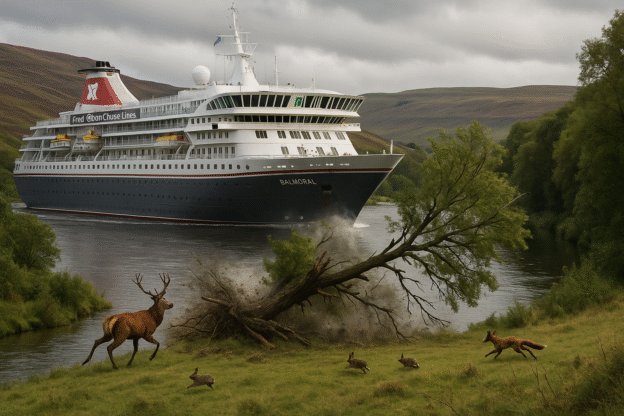When announcing the proposed wind farm development at Hope Moor, the BBC reported that the developer – Fred Olsen – ‘confirmed the scheme would be outside the boundary of the Yorkshire Dales National Park’. This is technically true but very misleading. The turbines stand just outside the boundary of the National Park but, as a Zone of Theoretical Visibility analysis clearly shows, the industrial-scale turbines would dominate long-established views across the north-eastern Dales.
The 20 turbines – not a typical size as the images on Fred Olsen’s website suggest – are of a different scale from anything we’ve seen in England before. Each turbine is as high as the UK’s biggest skyscraper outside London. They would be present inside the Dales visually, psychologically, ecologically, and environmentally. Our landscapes, bird flightlines, biodiversity corridors, etc. do not begin and end at the borders of the National Park. And when those borders were drawn for administrative purposes more than half a century ago, no one envisaged how such big turbines – twenty 200-metre turbines spread across 5km of skyline – could pose such an extensive threat to the landscape.
Misleading technical truth vs revealing psychological truth
Statements of fact do not necessarily convey a full and meaningful truth, nor do they always help us understand what is going on. This is where art and satire can help us by laying aside the literal truth so we can see the psychological truth beneath. The AI-produced image above – of a cruise liner sailing down a Dales river – is of course technically false. But it also conveys some psychological truths about the proposed wind farm, and how we will react once it is built.
The ship clearly doesn’t belong there. Although it is symbolic rather than literal, the image conveys a psychological truth. It creates a visceral sense of wrongness. It disrupts the landscape with an industrial-sized intrusion into nature. It dominates the skyline, disrupts the ecology and environment, and overwhelms anything small and vulnerable.
The scene is an impossible one but it reveals an underlying truth about the mismatch of scale. Fred Olsen’s industrial-scale wind farm will overwhelm a fragile countryside. Its size – like the size of the cruise ship – will obliterate an otherwise unspoilt horizon. The skyline – and the tranquillity and peace it conveys – will be lost.
The image also serves as a commentary on modern priorities. Offshore-sized wind turbines can be situated offshore but it is cheaper to put them on land. This creates a financial motivation that can risk the unnecessary loss of our most treasured landscapes. In terms of the bills we pay, the difference in construction cost is marginal.
Just as a Fred Olsen Cruise Ship does not belong on a Yorkshire Dales river, so too the Fred Olsen industrial-scale wind farm does not belong on the Yorkshire Dales skyline.
The importance of psychological truth
In the early 20th century, William James drew a distinction between a bare fact and the content of experience. And it is the experience that is the greater truth because it is the experience that affects us. We not only perceive it, but it also influences our wellbeing. The wind farm lying a few hundred metres outside the Yorkshire Dales is a bare fact. But the experience is that it will dominate the skyline for up to 30km inside the Yorkshire Dales.
And other disciplines tell us the same thing. In analytical psychology, literal and symbolic truth often diverge – and when they do, it is the symbolic truth that carries the greater power. In environmental psychology, the coherence of skyline and horizon is a major determinant of how restorative a landscape feels. Disrupt it, and the unconscious mind registers and reacts to the incongruence long before the intellect analyses it.
So, the cruise-ship image is psychologically true. It communicates — with satirical clarity — an emotional and perceptual truth that the technical boundary fact obscures. Fred Olsen’s reassurance is not false. It simply omits the dimension that matters most: the experience of the landscape.
The Precedent: One Cruise Ship at the Head of a Fleet
Hope Moor is not just a planning proposal; it is a test case. If approved, it will be the first offshore-scale wind farm to encroach upon the setting of a National Park in England. Under the Section 35 regime, precedent is paramount.
Developers will rightly ask: If twenty 200-metre turbines can dominate the skies around the Yorkshire Dales, why not around every other National Park or Area of Outstanding Natural Beauty?
In other words, if one ship sails through the valley, others will follow. A single act of industrial encroachment will become a pattern. And the psychological character of England’s national parks and uplands will gradually change or disappear as the landscape becomes industrialised.
The psychological truth is that landscapes shape us, restore us, and define the very character of our nation.

